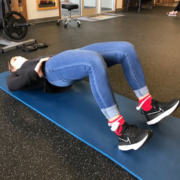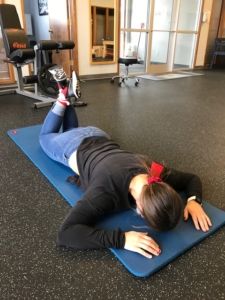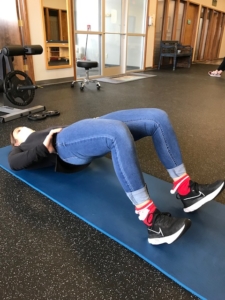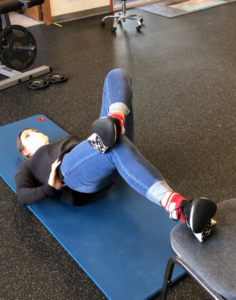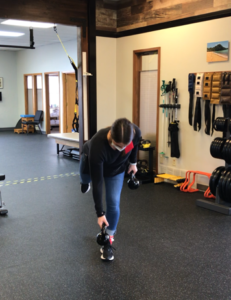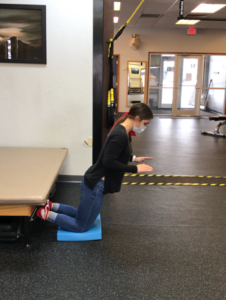Hamstring injuries are common among runners and have a high rate of recurrence (1). Therefore, it is especially important to focus on isolated strengthening after injury to restore muscle function and reduce risk of re-injury.
Hamstrings work the hardest during the terminal swing phase of running, right before your foot contacts the ground. As the leg swings forward, the hamstrings lengthen and contract eccentrically to decelerate the hip and knee in preparation for foot contact (2). Therefore, it is important to have good hamstring strength in a lengthened range and make sure your strength is good both as the muscles are lengthening and shortening. Here are some general questions answered to help with recovery and reduce risk of injury.
What should we do in the acute phase of a hamstring strain injury? (1,2,3)
1) Relative rest
2) Ice frequently during the first few days.
3) Pain-free mobility – Move hamstring through a pain-free range of motion. Performing this in non-weight bearing is best as it reduces further strain on injured tissue and allows for optimal healing. Avoid static stretching especially into a painful range as this can prolong healing time.
4) Use shorter strides when walking if needed.
5) Perform gentle submaximal isometric exercises – consider holding exercises for about 10 x 10 sec
Prone hamstring isometrics:
Double leg bridging:
6) Crosstrain (depending on severity) – Biking with low resistance is a way to stay fit and reduce hamstring muscle irritation
When are we more likely to injure our hamstrings with running? (1,2)
1) Fatigue – Many running injuries occur due to training errors or overload. Tracking mileage, intensity, and rate of perceived exertion are some of the ways to reduce training errors and injury risk.
2) Overstriding – Overstriding causes more lengthening of the hamstring muscle during late swing phase requiring the hamstring to work much harder. Therefore, when returning to running after injury, shortening your stride can help you return a bit quicker with less irritation.
3) Speed – Sprinting/speedwork is a common cause of hamstring strain injuries, and therefore, should be the last thing to add back into your running routine following injury. If full strength and consistent pain-free running is achieved, strides and speed should be gradually added back into, as this also helps to reduce future injury risk.
*For more information on how to mitigate risk and manage the above areas, contact our office and schedule an appointment with one of our physical therapists.
What are good exercises to do to reduce risk of injury? (2)
1) Bridge – Single leg bridge on the ground and progress to on a chair
2) Single leg airplane Romanian dead lift (RDL) – Progress to weighted RDL
3) Nordic hamstring curls (Photo 8)
4) Add in strides to your running
Sources:
1. Erickson, L. N., & Sherry, M. A. (2017). Rehabilitation and return to sport after hamstring strain injury. Journal of Sport and Health Science, 6(3), 262–270. https://doi.org/10.1016/j.jshs.2017.04.001
2. Heiderscheit, B. C., Sherry, M. A., Silder, A., Chumanov, E. S., & Thelen, D. G. (2010). Hamstring strain injuries: Recommendations for diagnosis, rehabilitation, and injury prevention. Journal of Orthopaedic & Sports Physical Therapy, 40(2), 67–81. https://doi.org/10.2519/jospt.2010.3047
3. Askling, C. M., Tengvar, M., Tarassova, O., & Thorstensson, A. (2014). Acute hamstring injuries in Swedish elite sprinters and jumpers: A prospective randomised controlled clinical trial comparing two rehabilitation protocols. British Journal of Sports Medicine, 48(7), 532–539. https://doi.org/10.1136/bjsports-2013-093214

